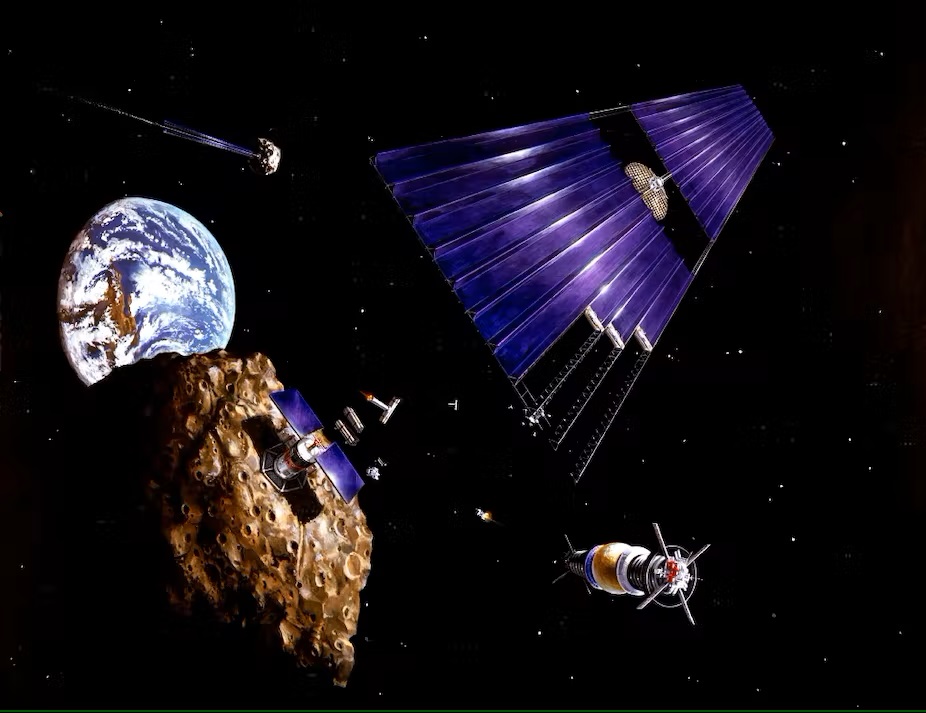Asteroid mining is slowly but surely coming closer to reality. Many start-ups and governmental agencies alike are getting in on the action. But plenty of tools that would help get this burgeoning industry off the ground are still unavailable. One that would be particularly useful is a list of potential candidate asteroids to visit. While the information has been available in various places, no one has yet combined it into a single, searchable database until now.
The Exploitation des Ressources des Corps Celestes (ECOCEL) database is an effort by a French team led by Irina Kovalenko of ISAE-SUPAERO, France’s premier aerospace engineering school. It captures combines two of the most aspects of asteroids that might be interesting to mining companies – how easy it is to get to them and what they are made of.
Determining how easy an asteroid is to reach is relatively simple and has been done in multiple places before. In fact, the ECOCEL team used data directly from the Jet Propulsion Laboratory’s Small-Body Database. This publicly available database tracks almost 25000 Near Earth Objects, the asteroids most likely to be visited by a first asteroid mining mission.
Credit – Stardust Reloaded YouTube Channel
To calculate how to reach the object, the Small-Body Database calculates the “delta-V,” or change in velocity necessary to get to the asteroid. Think of delta-v as the amount of energy required to reach an object, which is very important in the economic calculations of asteroid miners. The database tool itself has a specially designed interface that can select an asteroid based on minimizing the delta-v for a particular launch window.
ECOCEL incorporates that information into its own calculation but adds another layer that might be even more important – composition. Unfortunately, only 326 of the asteroids in the Small-Body Database have been spectrally characterized, which were reported in some previous papers. Therefore, ECOCEL, which relies on spectral data to determine an asteroid’s composition, is limited to that number.
Once a body’s spectral classification has been defined, the database links data from the composition of meteorite samples to the spectroscopy of similarly composed asteroids, leading to a general understanding of the external composition of the asteroid. Unfortunately, the internal composition is harder to estimate. It isn’t accurately tracked in the current iteration of the database, though orbital mechanics can theoretically estimate an object’s density and, therefore, its internal composition.
With basic flight and composition data at hand, ECOCEL takes it one step further by utilizing a tool called Sun Earth Moon dynamics Python package. This software library uses orbital mechanics data for calculating where a given object in the system will be, and the ECOCEL team takes advantage of that to provide calculations for both one-way and round-trip flights. It also provides a potential launch window between 2020 and 2050, farther than most comparable databases.
Some additional features include the ability to calculate a parking orbit and set delta-v limits. Overall, the database is must more tailored to the needs of both commercial and governmental asteroid mining projects than any that has previously been developed.
Unfortunately, as of the time of writing, the database at ecocell-database.com does not appear to be online. It’s unclear when it will come back, as it had previously been used in other studies, and a paper and presentation detailing its development were released in March. Hopefully, this potentially helpful internet-based tool will be able to make a comeback and prove useful to those engineers and entrepreneurs interested in making a go at creating the next great mining industry.
Learn More:
Kovalenko et al – ECOCEL database: An online tool for asteroid mission planning
Kovalenko et al – Asteroid selection database for space mining mission analysis
UT – What Would Asteroid Mining do to the World’s Economy?
UT – Study Looks at Making Asteroid Mining Viable
Lead Image:
Asteroid mining concept.
Credit: NASA/Denise Watt

